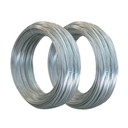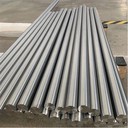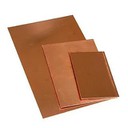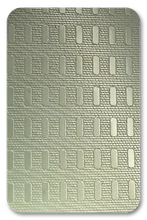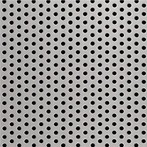Contact Us
- Xinwu District, Wuxi City, Jiangsu Province
- info@szdepu-metals.com
- +86 134 24179016

Brazing Stainless Steel Sheet Metal
Stainless steel is a popular material for many applications because of its excellent corrosion resistance,
high strength, and durability. When brazing stainless steel sheet metal, it is important to choose the
right filler metal to ensure that the joint is strong and corrosion-resistant. The most common filler metals
used for brazing stainless steel are silver-based alloys, which have high melting points and excellent
corrosion resistance.
Description
Products Description
Brazing is a joining process that uses a filler metal to bond two metal surfaces together. It is commonly used in industries such as automotive, aerospace, and manufacturing to join metals with high precision and strength. When it comes to joining stainless steel sheet metal, brazing is a popular option due to its ability to create a strong and reliable bond while maintaining the properties of the base material. Next, we will provide a detailed explanation of brazing this kind of metal, including its features and mechanical properties and examples of applications.
Features
Brazing stainless steel sheet metal involves using a filler metal with a melting point lower than that of the base material to create a strong and permanent bond. The filler metal is typically a nickel-based alloy that can withstand high temperatures and has good corrosion resistance. The two most commonly used filler metals for brazing stainless steel are nickel-silver and silver-based alloys.
Nickel-silver is a copper-nickel-zinc alloy that has good flow properties and is well-suited for joining stainless steel sheet metal.
Silver-based alloys, on the other hand, have a lower melting point than nickel-silver and can be used to braze thinner sheets of stainless steel.
●One of the main advantages of brazing stainless steel sheet metal is its ability to create a joint that is aesthetically pleasing and does not require additional finishing. The brazed joint is smooth and flat, and the filler metal does not discolor or tarnish the stainless steel. This makes it a popular option in industries where the appearance of the joint is important, such as the jewelry industry.
●Another characteristic of brazing stainless steel sheet metal is its ability to join dissimilar metals. Stainless steel can be brazed to other metals such as copper, brass, and aluminum, making it a versatile joining process. This is particularly useful in the automotive industry where different metals are often used in the production of cars.
Mechanical Properties
The mechanical properties of a brazed joint depend on several factors, including the type of filler metal used, the joint design, and the brazing process. In general, a brazed joint will have a tensile strength that is equal to or greater than that of the base material. However, the joint may have lower ductility and toughness, particularly if the brazing process is not carried out correctly.
To illustrate the mechanical properties of brazed stainless steel sheet metal, let us consider an example. Imagine that we want to join two 304 stainless steel sheets that are 1.2 mm thick using a nickel-silver filler metal. The joint design is a lap joint with a 5 mm overlap. The brazing process involves heating the sheets to a temperature of 850°C for 10 minutes in a controlled atmosphere furnace.
After brazing, the joint is tested for its mechanical properties. The tensile strength of the joint is found to be 430 MPa, which is higher than the tensile strength of the base material (210 MPa). The joint is also found to have good corrosion resistance, which is important in applications where the joint will be exposed to harsh environments. However, the joint may have lower toughness and ductility than the base material due to the high temperature of the brazing process.
Examples
Here are some examples of brazing stainless steel sheet metal:
Heat exchangers: It is used in heat exchangers, where it provides a high-strength joint and corrosion resistance. The heat exchanger tubes are made of stainless steel, and the fins are made of aluminum. The tubes and fins are brazed together using a silver-based filler metal, producing a strong joint that can withstand high temperatures and pressures.
Exhaust systems:It is used in exhaust systems, where it provides a strong joint and corrosion resistance. The exhaust
pipes are made of stainless steel, and the flanges and joints are brazed together using a nickel-based filler metal, producing a joint that can withstand high temperatures and corrosive gases.
Surgical instruments: It is used in surgical instruments, where it provides a strong and corrosion-resistant joint. The instruments are made of stainless steel, and the joints are brazed using a silver-based filler metal, producing a joint that can withstand repeated sterilization and use.
Air conditioning systems: It is used in air conditioning systems, where it provides a strong and corrosion-resistant joint. The components, such as the evaporator and condenser coils, are made of stainless steel, and the joints are brazed using a copper-based filler metal, producing a joint that can withstand high pressures and temperatures.
In a word,brazing stainless steel sheet metal is a versatile joining technique that provides a strong, leak-proof joint that is resistant to corrosion. When brazing stainless steel, it is important to choose the right filler metal and brazing temperature to ensure that the joint has the desired mechanical properties. With its excellent corrosion resistance, high strength, and durability, brazed stainless steel sheet metal is an ideal choice for many applications in a variety of industries.
Hot Tags: brazing stainless steel sheet metal, China brazing stainless steel sheet metal manufacturers, suppliers, factory
You Might Also Like

